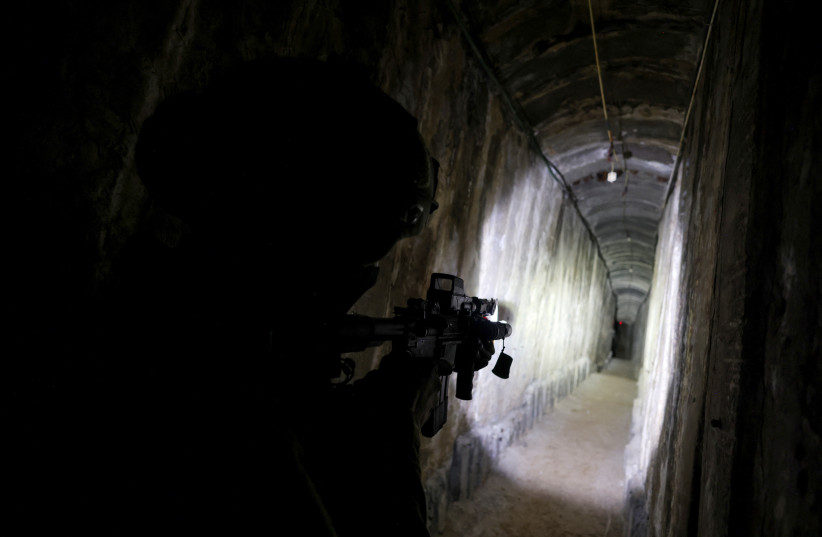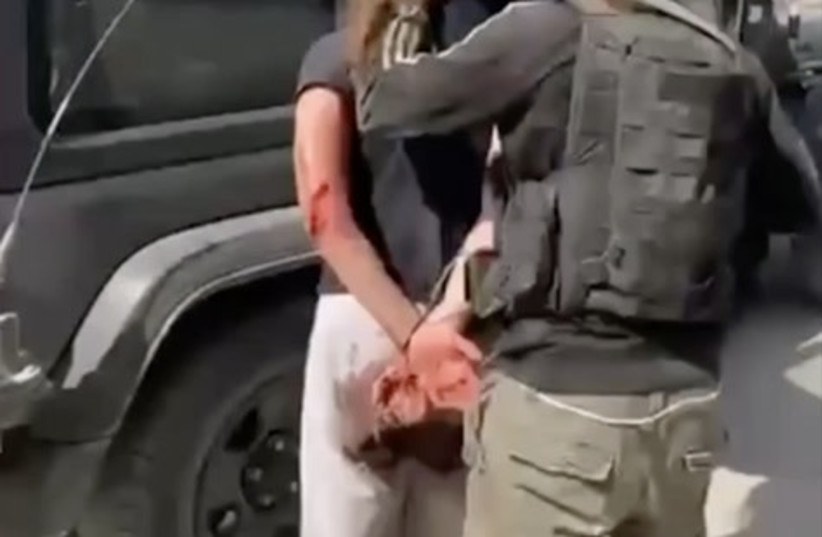Ever since it seized more than 200 people in the deadly rampage through southern Israel that triggered the Gaza war, Hamas has hoped to use hostages as bargaining cards with Israel in order to win freedom for Palestinians in Israeli jails.
But as mediators try to secure extensions to a truce between Israel and Hamas to enable more hostage releases, the Palestinian terrorist group may struggle to locate more captives in the chaos of the conflict, Palestinian and Egyptian security sources familiar with the talks said.
While Hamas planned and launched the Oct. 7 attack, other terrorists quickly joined in, pouring into Israel and seizing more people. Hamas says it is working to locate them in a Gaza Strip shattered by weeks of Israeli bombardment.
Hamas may also be holding back information, the sources said. Mediator Egypt believes Hamas is concealing some of what it knows, and saying it needs to do so for security reasons and as a negotiating strategy, Egyptian security sources said.
Network of tunnels
Hamas has said the hostages were being treated well, in line with Islamic teachings. They are believed to be in a vast network of tunnels that Hamas has built over the years.

But the Israeli air strikes, which flattened entire neighborhoods, may have cut off passages between tunnels, making it difficult for Hamas to find hostages.
One Palestinian source said the bombardment "complicated" the situation in the field.
The bodies of at least two hostages have been recovered by Israeli forces in Gaza and Hamas has said that more than 60 hostages were missing due to Israeli air strikes.
Islamic Jihad, another Iran-backed Palestinian terrorist group, has said they have more than 30 captives, indicating there could be 20 who might be held by members of smaller groups.
The hostages have ranged from a baby and young children to grandmothers and soldiers, some taken from kibbutzim, others from a music festival.
Both Hamas and Islamic Jihad took part in a prisoner swap on Tuesday, which suggests that Hamas may be collecting hostages from other groups.
One Israeli source with knowledge of the issue said Hamas was estimated to be holding 90% of the hostages.
"It's their responsibility to find the other 10%," the source said.
Asked whether Hamas was capable of locating all the other hostages, the source said: "They are capable of anything inside the strip. The question is whether they want to."
"It's convenient for them to say that they're not holding all of them so that they can buy time."
Hamas official Khalil Al-Hayya said the group would be able to meet conditions to extend a truce if they could locate more captives.
Even if Hamas is able to find all the remaining hostages, it is unlikely to turn over information because the captives give the terrorist group leverage, a Western source in the Gulf said.
Some may have perished in the fighting.
"It's highly likely that there were a lot of hostages taken out in those air strikes," the source said.
Hostages seized during rampage
The hostages released so far were among some 240 people seized by the terrorists during the Oct. 7 raid, which Israel says killed 1,200 people. Israel's bombardment of Hamas-ruled Gaza in retaliation has killed more than 15,000 Gazans, Hamas-run health authorities there said.
The heads of the US Central Intelligence Agency (CIA) and Israel's Mossad met Qatar's prime minister in Doha on Tuesday to discuss the truce between Israel and Hamas.
Officials in the meeting talked about a possible new phase of the truce agreement including Hamas releasing hostages who are men or military personnel, not just women and children, a source said.
Qatar spoke to Hamas before the meeting to get a sense of what the group might agree to, the source added.

About 159 hostages remain in Gaza.
Two Palestinian sources close to truce efforts said the talks are focused at present on swapping non-soldiers - meaning Israeli civilians, dual nationals, and foreigners, but no talks about the soldiers are underway.
The soldiers "have different types of prices," Hamas says.
One of those prices would be for Israel to "clear all prisons," meaning all Palestinians jailed in Israel.
About 5,000 Palestinians were being held by Israel before Oct. 7, but Israel has since rounded up around 3,000, almost all from the West Bank, said the Palestinian Prisoners Club, which documents and cares for all Palestinian detainees.
Some have been held without trial in what Israel calls "administrative detention." Some are children, held for such actions as throwing stones, while others are accused of stabbing attempts on Israelis.
Hamas is well aware that it has in the past secured the release of large numbers of prisoners in return for one soldier.
In 2011, Israeli soldier Gilad Shalit was freed after five years in captivity in return for freedom for 1,027 Palestinians held in Israeli jails for carrying out attacks against Israelis.
Shalit was captured by Palestinian terrorists who tunneled into Israel and took him across the frontier into Gaza.
Hamas and Israel were expected to release more hostages and prisoners on Wednesday, the last day of an extended six-day truce in the Gaza war. Mediator Qatar is trying to negotiate another extension.
Israel has said the truce could be prolonged further, provided Hamas continues to free at least 10 Israeli hostages per day.
But with fewer women and children still in captivity, keeping the guns quiet beyond Wednesday may require negotiating to free at least some Israeli men for the first time.
Palestinian sources said Hamas was able to gather some hostages with smaller groups, but it is unclear whether the Islamic Jihad would carry its own swaps or conduct them through Hamas.
Israeli spokesman Eylon Levy said on Wednesday the government held Hamas fully responsible for the abduction of everyone held inside Gaza.
"We're demanding that Hamas bring them back and do everything in order to bring them back," he said.
